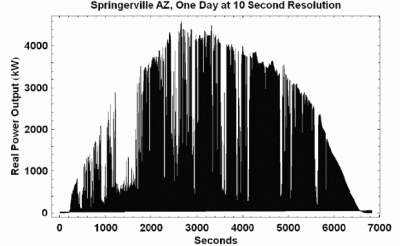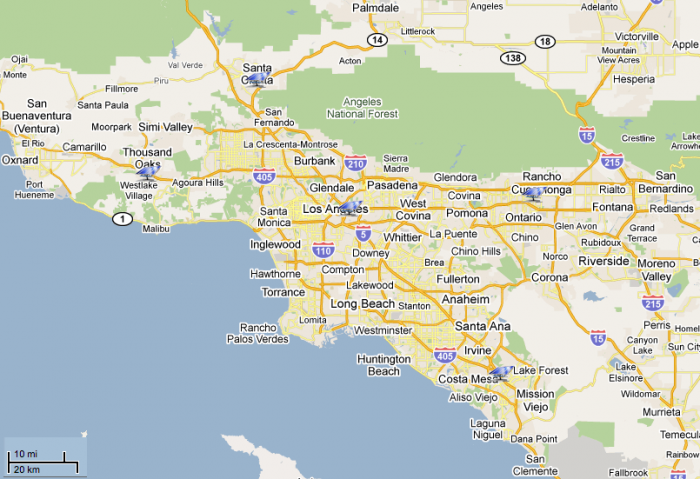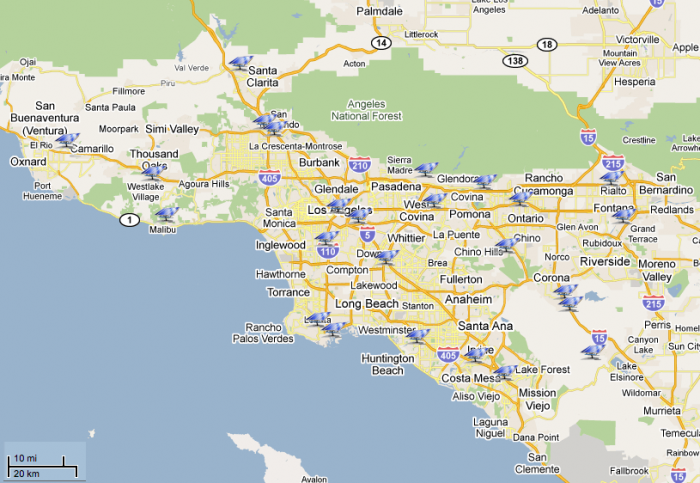 This post originally appeared on Energy Self-Reliant States, a resource of the Institute for Local Self-Reliance’s New Rules Project.
This post originally appeared on Energy Self-Reliant States, a resource of the Institute for Local Self-Reliance’s New Rules Project.
The solution to the variability of solar power is more solar.
 It’s true that individual solar power plants can experience significant variation in power output, especially on days with mixed sun and clouds. “Output of multi-MW PV plants in the Southwest U.S., for example, are reported to change by more than 70% in five to ten minutes on partly-cloudy days,” notes a 2010 NREL study of solar variability [PDF]. A story on Greentechmedia has an powerful illustration (see right).
It’s true that individual solar power plants can experience significant variation in power output, especially on days with mixed sun and clouds. “Output of multi-MW PV plants in the Southwest U.S., for example, are reported to change by more than 70% in five to ten minutes on partly-cloudy days,” notes a 2010 NREL study of solar variability [PDF]. A story on Greentechmedia has an powerful illustration (see right).
But while the output from a single solar power plant may vary significantly, the aggregate production of just five dispersed solar power plants drops the utility’s backup costs by 75 percent, and putting 25 solar power plants across a broad region reduces those costs by 93 percent, to far less than a penny per kilowatt-hour (kWh).
What does it mean to disperse solar power? The NREL study suggested that the five solar PV plants be dispersed by 50 kilometers (km). Let’s look at that illustrated in sunny Los Angeles. If the first PV plant is in downtown LA, the 4 other solar facilities can be located in nearby suburbs.

Reducing variability further doesn’t require more range, but simply more solar. The 25 solar facilities can be in the same vicinity as the original 5.

The study focused on megawatt (MW) scale PV plants, but the lesson can apply to dispersing residential scale solar PV, as well. And with millions of sunny home rooftops in LA just waiting for a chance to plug in, the variability of solar production in the region would continue to fall.
Solar power isn’t the silver bullet, but its variability is an argument for, not against, its expansion.


